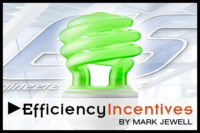
FIGURE 1. Unified messages from a variety of stakeholders support customers in making the right decisions on motor issues.
Making costs and savings clearer speeds project approval.
Show me an organization that has an enviable track record of making its operations more energy-efficient, and I’ll show you a team that has figured out how to link its boiler room to its boardroom so that actionable communication flows in both directions.
Engineers need to understand the criteria that management uses to evaluate and approve expense-reducing capital projects. Management needs to understand how each engineering recommendation would affect the organization’s competitiveness, profitability, and value if implemented. Bilateral communications ensure that both ends of the decision making chain work in concert to meet or exceed the organization’s efficiency goals.
Facilitating communication between boiler room and boardroom can be chal-lenging. Engineers think and speak about terms like “horsepower,” “kilowatts,” and “kilowatt-hours” as they track their operations’ energy use. Capital budgeting folks, on the other hand, live in a world dominated by terms like “cost of capital,” “internal rate of return,” and “net present value” as they try to optimize the allocation of finite resources. Unless these two vocabularies can be reconciled, the organization’s ability to identify and implement energy-saving capital projects will fall short.
THE 95% SOLUTION
The potential to improve motor efficiency offers an excellent example of these concepts at work. Many managers don’t realize that electricity costs account for approximately 95% of a motor’s lifetime costs and that great savings can be achieved by increasing motor efficiency. Improving motor efficiency may also improve productivity, reduce O&M costs, and help improve air quality by reducing greenhouse gas emissions. Outcomes such as these are the stuff that compelling capital budgeting proposals are made of. That assumes, of course, that these outcomes are properly quantified in terms that resonate with financial decisionmakers. And that’s precisely where initiatives like “Motor Decisions Matter” (MDM) can be very helpful.MDM is a national campaign designed to improve the way motor repair or replace decisions are made by promoting the financial and performance benefits of sound motor management policies. MDM aims to increase awareness of motor management opportunities; boost demand for NEMA Premium® motors and best practice motor repair; encourage the market to engage in motor planning; and, enable various stakeholders to collaborate nationally to enhance local effectiveness.
MDM sponsors include motor manufacturers, efficiency program administrators, trade organizations (such as EASA, the trade association for motor sales and service centers), and other entities such as the DOE and the Consortium for Energy Efficiency. For more information on MDM, visitwww.motorsmatter.org.

FIGURE 2. Energy savings options are available when repairing or replacing motors.
MINIMAL DATA, ROBUST RECOMMENDATIONS
MDM’s “1•2•3 Approach to Motor Management” provides a framework for a wide variety of motor-related decisions, such as maintaining an inventory of spares, proper motor sizing, and best-practice repairs. For example, an engineer can select a few representative motors for review, collect nameplate data from these motors, and enter that data into the 1•2•3 Spreadsheet. By reviewing these few motors, the engineer can begin to create an appropriate motor management plan. Of course, plans can also start with a more comprehensive motor survey.Once the data has been entered, the spreadsheet will automatically perform a number of similar calculations for two possible courses of action: replacing the motor immediately with a NEMA Premium motor, or proactively deciding on an appropriate, cost-effective course of action in preparation for future motor failure. The following courses of action should be considered:
- Rewind the existing motor following best practice procedures.
- Replace the failed motor with an EPAct standard-efficiency motor.
- Replace the failed motor with a NEMA Premium motor.
The tool can also facilitate discussion between a facility manager and their trusted motor service professional. The 1•2•3 Approach provides guidelines for discussing and prioritizing appropriate strategies and can be completed quickly and easily with a minimum amount of time required for data collection. On the other hand, entering organization-wide motor data into this tool creates the opportunity to discuss the benefits of comprehensive motor planning. MDM also offers a correspondingUser’s Guidewith the spreadsheet, which provides guidelines for each step of the process, from entering data to interpreting results.
The latest version of 1•2•3 Software incorporates several improvements over pre-vious releases, including a Quick Start Guide and Summary Page. New navigation buttons facilitate speedy data entry and reporting. This latest version also features several new fields, including available incentive, motor life, and replacement choices (NEMA Premium v. EPAct). The calculations now feature Life-Cycle Cost (LCC) instead of Return on Investment (ROI). With new graphs that help compare replacement choices and new tables that depict LCC, simple payback, and NPV, this latest version of 1•2•3 can really help engineers build financially compelling capital budgeting proposals
MOTOR MONEY MATTERS!
As referenced above, the latest version of MDM’s 1•2•3 Spreadsheet considers available incentive dollars when calculating returns. Fortunately, the pool of potential incentives to support the installation of energy-efficient motors and drives continues to grow. There are several excellent sources for more information on motors and drives incentives. Two of the best are available online:- Energy-Efficiency Incentive Programs Premium-Efficiency Motors and Adjust-able Speed Drives in the U.S. and Canada, May 2007, (www. motorsmat-ter.org/tools/programs2007.pdf)
- Database of State Incentives for Renewable Energy (DSIRE), which also lists in-centives for a wide variety of energy-efficient technologies including motors and drives (www.dsireusa.org) ES




